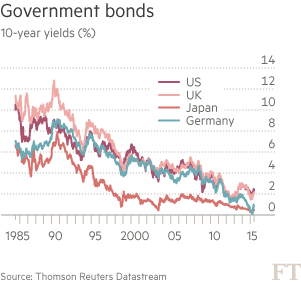
Reporter Ed Mendel covered the Capitol in Sacramento for nearly three decades, most recently for the San Diego Union-Tribune. More stories are at Calpensions.com.
The CalSTRS board voted this month to “watch” a new cost-neutral bill in Congress that would reduce what has been an unpleasant surprise for some teachers and a shock to others — joining CalSTRS can cut Social Security benefits.
Two federal laws enacted to avoid Social Security overpayment and inequity are mainly aimed at government employees who receive a pension but no Social Security. In California, that includes nearly all teachers and many police and firefighters.
A long-standing CalSTRS policy seeks the repeal of the Government Pension Offset enacted in 1977, which cuts Social Security survivor benefits, and the Windfall Elimination Provision enacted in 1983, a cut in Social Security monthly payments.
The two federal laws are unfair, CalSTRS argues, and harm teacher recruitment. Among those often hit are teachers who earn Social Security before entering the profession or who earn Social Security on non-teaching summer jobs.
“CalSTRS members (873,329) represent the single largest group of state and local government employees in the country who do not participate in Social Security, and the offsets particularly impact educators who begin their career at a later date,” Mary Anne Ashley, CalSTRS governmental affairs director, told the board.
A survey done for the California State Teachers Retirement System in 2013 found that 63 percent of retired CalSTRS members earn a Social Security benefit, and 41 percent were affected by the Windfall Elimination Provision.
Offset repeal legislation, costly and unneeded in many states with full Social Security participation, has been routinely rejected in Congress. A few years ago the estimated cost of repeal to Social Security was $61 billion to $80 billion over 10 years. Only 15 states do not provide Social Security for teachers.
This year, a cost-neutral bill was introduced. But it only partially reduces the Windfall offset and leaves the Pension survivor offset untouched. Part of the cost of allowing workers to keep more of their Social Security earnings is reduced by recovering Social Security overpayments.
Another part of HR 711 by Rep. Kevin Brady, R-Texas, that helps reduce its cost was criticized by CalSTRS board members. The Windfall offset would be expanded to cover another large group: those who teach less than the five years needed to vest and receive a pension.
“So is it correct, then, that this is a bill that would basically help some of our members and hurt other of our members, and if that’s the case is there a rationale?” asked board member Paul Rosenstiel.
The CalSTRS fiduciary counsel, Harvey Leiderman, compared the bill to “Sophie’s Choice,” the mother in a William Styron novel and movie forced in Nazi Germany to choose a labor camp for one child and the gas chamber for the other.
Last year CalSTRS had 146,471 inactive non-vested members who could be hit by the Windfall offset under the bill. If these members do not remove their interest-earning pension contributions from CalSTRS by age 70½, they face a tax penalty.
Ed Foglia of the Retired Employees Association of the California Teachers Association said the bill is not supported by its affiliate, the National Education Association.
The bill would fix “half of the problem” for some at the expense of others, he told the CalSTRS board, and Congress might think passage of the bill solved the problem, so there is no need to repeal the offsets.
“What we are asking you to do is at the very least have a ‘no position’ on this and see if you can mitigate the problem so no one is hurt,” Foglia said.
The CalSTRS board voted to “watch” HR 711 and “engage” the author about board concerns. The board voted to support the current bill to repeal the two Social Security offsets, HR 973 by Rep. Rodney Davis, R-Illinois.

What’s eliminated by the Windfall Elimination Provision? Social Security is designed to replace a much larger part of the income of low-wage earners than of higher-wage earners.
A worker whose primary job provides a pension but not Social Security could get the “windfall” of being treated like a low-wage earner while working on another job covered by Social Security.
So, instead of getting the usual 90 percent of the first $826 of average monthly earnings, a worker covered by the Windfall Elimination Provision only gets 40 percent of the first $826. (See chart above)
What’s offset by the Government Pension Offset? The Social Security spousal payment was established in the 1930s when spouses who stayed home to raise families often were dependent on the working spouse.
As it became common for both husband and wife to work, the Social Security spousal payment to a widow or widower was reduced dollar-for-dollar by the amount of their own Social Security benefit.
So, to give workers who receive a government pension but no Social Security a similar “offset,” their Social Security spousal payment was reduced by two-thirds of their government pension.
In the past CalSTRS has given Congress a detailed analysis showing why the two Social Security offsets are unfair and arbitrary, emphasizing the impact of the spousal offset on its membership that is 70 percent female with longer expected life spans.
“There are discrepancies between the theoretical policy of the offset provisions and the actual consequences of the offsets,” board member Dana Dillon told a Senate subcommittee in 2007.
Leading politicians have urged repeal of the offsets. Sen. Dianne Feinstein carried repeal legislation for a decade, followed by former Sen. John Kerry. President Obama, while campaigning in 2008, said he would work to repeal the offsets.
The California Retired Teachers Association makes lobbying trips to Washington, D.C., each congressional session. A grass-roots group, the Committee for Social Security Fairness, has an educational and organization campaign to reform the offsets.
The California Legislature routinely passes resolutions urging Congress to repeal the offsets. This year it’s SJR 1 by Sen. Jim Beall, D-San Jose. While in the Assembly in 2009, Superintendent of Public Instruction Tom Torlakson carried the resolution.
At an Assembly hearing, Torlakson gave specific examples of teachers hurt by the offsets. “This comes under a couple of possible labels,” he said. “It would be a ‘Catch 22’ or it would be a massive rip-off.”
A law in 2005 requires employers not in Social Security to tell new hires about the offsets. In a 2008 survey of CalSTRS members, 29 percent with Social Security credits were unaware of the income offset, and 44 percent of active members were unaware of the spousal benefit offset.
Photo by Stephen Curtin via Flickr CC License









